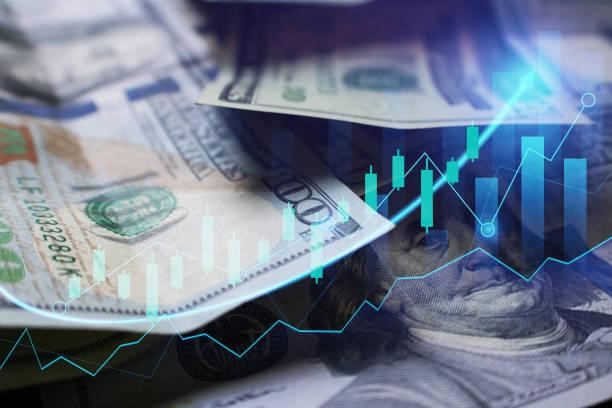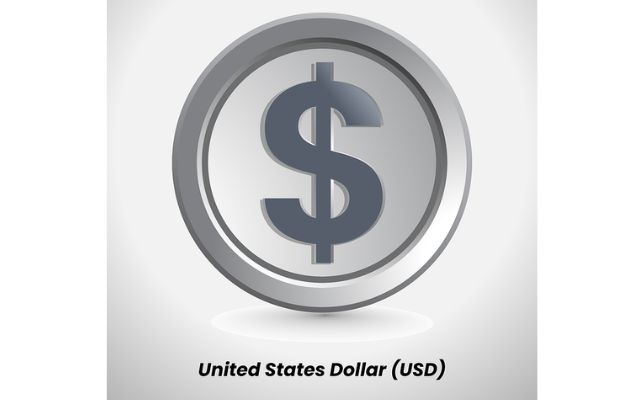Top 5 Factors Influencing XAU/USD Trends You Need To Know

The XAU/USD rate uniquely captures global monetary undercurrents through the interplay of gold and the US dollar – two assets with unrivaled significance as both financial havens and currency foundations. Movements between gold and USD values can signal macro shifts. Interpreting the complex factors swaying XAU/USD trends remains critical for traders worldwide.
This examination will spotlight the top five drivers, from geopolitics to interest rates, which most directly orchestrate gold’s value dance across financial markets, offering context to investors navigating this vital pair’s rhythms.
Multiple powerful forces work in tandem to steer gold against USD pricing amid global headwinds and tailwinds.
Here are Factors Influencing the USD
1. Interest Rates and Inflation
As a non-yielding asset, gold appeals more with lower rates, given reduced opportunity costs and heightened incentives for an inflation hedge. When rates fall, investors flock to gold’s stable value storage, lifting prices. Declining rates also risk longer-term currency depreciation absent yield buffers, further bolstering anti-fiat gold.
Simultaneously, gold offers wealth preservation if inflation erupts; hence, higher expected inflation similarly spurs demand. However, aggressive rate hikes to tame rising prices can pare gold’s upside. We see central bank policy balancing both dynamics – trying to calibrate rate trajectories to stabilize inflation without spurring recessionary reversal.
This interplay between inflation outlooks and rate shifts forms a fundamental XAU/USD tug-of-war. Dovish monetary policy fans inflation fears, benefiting gold despite lowered yields. Hawkish rapid tightening tempers both price growth and gold simultaneously.
Hence, pricing trends emerge from the struggle between policy impacts on currency debasement fears vs real asset opportunity costs.

2. Geopolitical Uncertainties and Risk Aversion
Geopolitical instability has long sparked gold’s perception as the ultimate haven – a role further magnified in today’s ever more interconnected yet fracture-prone global arena. As cross-border and regional tensions escalate, cascading risks of armed conflict, sanctions blowback, and disrupted trade flows can quickly dominate through supply chains, financial systems, and beyond.
This leaves institutional investors highly attuned to geo-economic stability signals and ready to bolt at first signs of tremors. The result is demand shockwaves and massive capital flight towards uncorrelated shelters offering ballast against market turmoil. Gold stands first among equals during such panicked scrambles thanks to its accessibility, portability, and universally recognized value retention properties.
From Russian energy threats and Iranian nuclear tensions to Korean peninsula saber-rattling and South China Sea confrontations, danger zones abound to trigger investor haven flights if mishandled by global powers. Traders must monitor these unfolding instability threats and model potential risk-off cascades through different scenario analyses. Understanding associated demand flows and market positioning helps time entries and exits amid volatile XAU/USD swings as headwinds morph. While most acute during active crises, haven tonality persists as background radiation shapes gold’s durable floor valuation.
3. USD Strength and Weakness
As the denominator side of the pairing, prevailing valuations and the broader strength of the US dollar share an intrinsically inverse relationship with gold prices. When the dollar weakens due to subdued economic data, dovish Fed policy, or lagging yields, gold often rallies because of its enhanced purchasing power abroad. The opposite dynamic occurs if USD strengthens against major currencies, resulting in falling gold prices.
This interplay relates to multiple inputs like trade balances, GDP growth differentials between the US and competing developed markets, and relative performances across equity/bond markets. Traders must monitor the dollar’s value via the DXY index together with the myriad factors swaying its perceived haven merits relative to other major currencies. Determining whether conditions favor dollar-positive or dollar-negative regimes is crucial for projecting directionality.

4. Central Bank Policies
As some of the most influential policymaking bodies overseeing global financial systems, central bank decisions can significantly sway investor perceptions around macro growth and stability outlooks for major advanced economies. Their communications and actions are closely tracked for indications of the current trajectory.
Dovish stances favoring accommodative interventions like quantitative easing tend to undermine associated currency valuations – providing tailwinds to gold prices. Conversely, rapid or outsized rate hike cadence generally aims to tame inflationary forces and prop up currencies. These more hawkish actions can negatively impact gold’s appeal.
Therefore, traders look to central bank postures across key jurisdictions as bellwethers for broader economic perspectives and, indirectly, future demand flows between fiat currencies and inflation hedges like gold. Their signaling steers market momentum across risk assets.

5. Market Sentiment and Technical Analysis
In tandem with macro fundamentals, market psychology, and quantitative technical techniques add further context to the prevailing XAU/USD momentum. Sentiment measures like the Commitments of Traders report offer visibility into institutional bullishness, often predictive of strengthening gold positioning ahead.
Charting analysis reveals potential inflection points for directional swings based on historical price action – from Moving Averages to Fibonacci Retracements. Together, these complementary lenses help time cycle turns, manage risk/reward, identify extremes, and project technical upside/downside.
Conclusion
Interpreting XAU/USD’s intricate price dance mandates mapping its diverse yet intertwined drivers, from rates to geopolitics. Interest level impacts on inflationary fears and opportunity costs tango with USD valuations and risk appetites amid global tensions. Central bank posturing indicates broader economic moods.
And sentiment gauges alongside technical levels signal when to pivot. By grasping these multifaceted inputs and their relationships, traders can time cycle turns. As gold’s shine persists amid market turmoil, informed analysis promises an edge. Whether for risk management or seizing profit, those who unravel complex drivers and behavioral responses will unlock XAU/USD’s potential.






